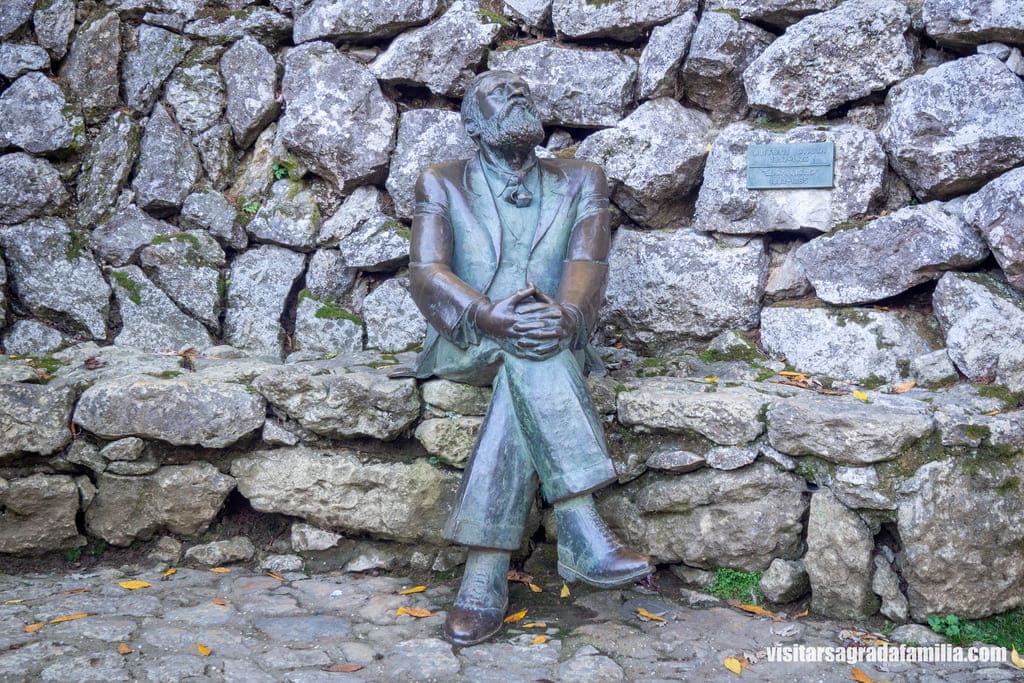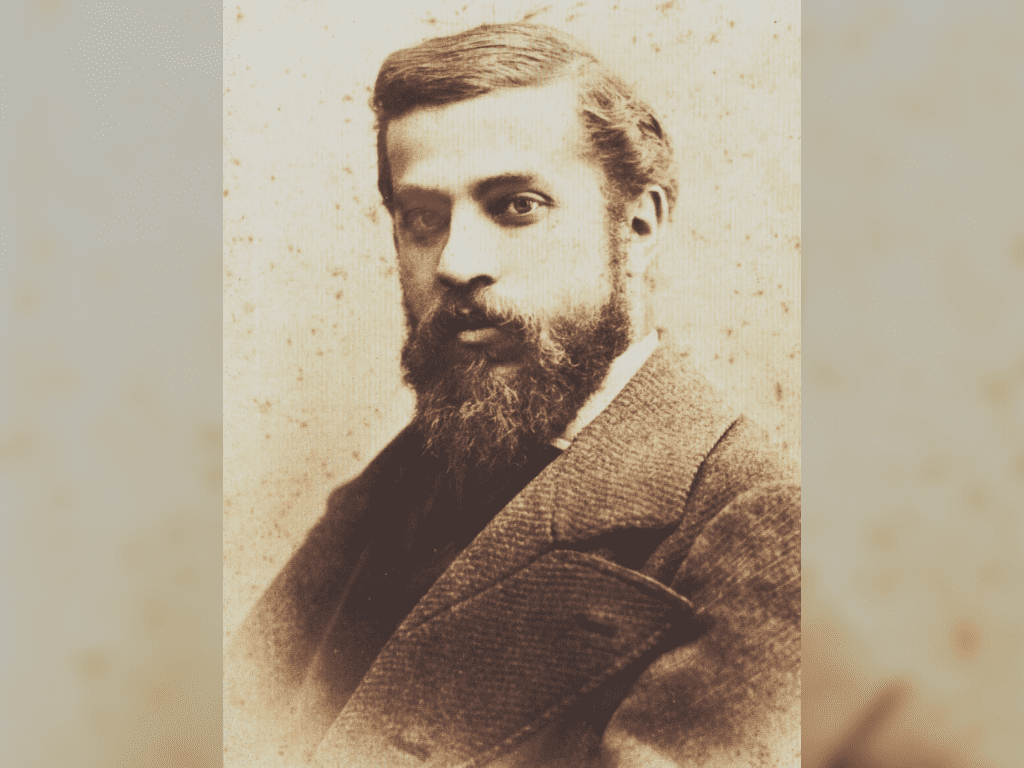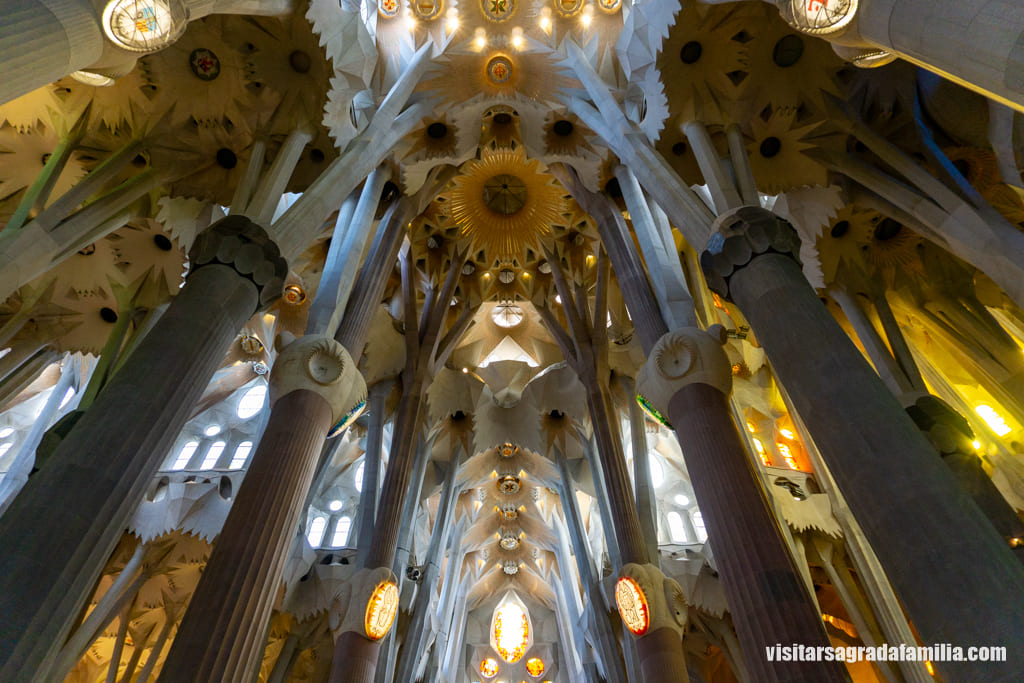If you’ve visited Barcelona, you’ve surely seen many of Antoni Gaudí’s works. His buildings are unique and reflect the exceptional personality of the Reus-born architect. Gaudí was a genius of architecture, but also a deeply religious man committed to his time. His works are an expression of his faith, his love of nature, and his desire to create a better world. In this article, we’ll get to know Antoni Gaudí, one of the most important architects in history. We’ll explore his life, his work, and his legacy.
Book your skip-the-line guided tour

Table of contents
Birth of Gaudí
Antoni Gaudí was born on June 25, 1852, somewhere in the Baix Camp region (Tarragona, Catalonia). The exact place of his birth is disputed since there was no civil registry at the time. Most of Gaudí’s documents, both from his student and professional life, place him in Reus, a small city near Tarragona. However, Gaudí himself claimed on several occasions that he was born in “mas de la Calderera,” a family property in Riudoms, about 5 km from Reus.
What is certain is that on June 26, he was baptized in the Prioral Church of Sant Pere in Reus with the name Anton Placid Guillem Gaudí Cornet. He was the fifth of five siblings, of whom only three reached adulthood (and he was the only one to live past age 35).
Skip the Lines at the Sagrada Familia
Get your Sagrada Familia tickets in advance and skip the endless lines at the entrance.
Gaudí’s Childhood
Antoni Gaudí’s creativity was largely shaped by his family environment. For more than five generations, his family manufactured copper products, especially large barrels used for distilling grape alcohol in Tarragona. Gaudí acknowledged that his spatial perception developed while working with forged copper sheets, influencing his worldview and enabling him from an early age to conceive objects in three dimensions rather than just two. This understanding of form as malleable and almost sculptural played a key role in the development of his distinctive architectural style.
Gaudí’s childhood was marked by health issues. He suffered from rheumatism from a young age, contributing to his introverted and reserved nature. Later, he became a vegetarian and adopted the hygienist theories of Dr. Kneipp. These beliefs, along with religious motivations, led him to undertake extreme fasting that sometimes endangered his life.
He began his education at the kindergarten of Francesc Berenguer, the father of one of his future collaborators. He later attended the Piarist school in Reus, where he excelled in drawing and contributed to the weekly newspaper El Arlequín. He also apprenticed at the Vapor Nou de Reus textile factory.
Studies and Youth
In 1868, Antoni Gaudí moved to Barcelona to continue his secondary education at the Convent of Carmen. Between 1875 and 1878, he completed military service in Barcelona. Due to health problems, he was largely exempt from active duty and was able to continue studying. During this time, he lost his mother at 57 and his brother Francesc, a 25-year-old newly qualified doctor who died without ever practicing.
Gaudí began his architectural education at the School of La Llotja and graduated from the Barcelona Higher Technical School of Architecture in 1878. Although his academic record was inconsistent and included several failures, Gaudí stood out for his focus on his own interests. When awarded his degree, the school director Elies Rogent said: “We have given a degree to either a madman or a genius; time will tell.”

To finance his studies, Gaudí worked as a draftsman for several architects and builders, including Leandre Serrallach, Joan Martorell, Emilio Sala Cortés, Francisco de Paula del Villar y Lozano, and Josep Fontserè. Upon receiving his degree, Gaudí jokingly told his friend, sculptor Llorenç Matamala: “Llorenç, they say I’m now an architect.”
Professional Career
After obtaining his degree, Antoni Gaudí set up his office on Carrer del Call in Barcelona, where he designed much of his architectural legacy, now recognized as World Heritage.
In 1878, Gaudí met Eusebi Güell, a strong advocate for national industry and lover of the arts. Their meeting marked the beginning of a unique relationship, not just between client and architect, but also as friends with shared interests. This friendship allowed Gaudí to fully express his artistic talents and embark on a prolific professional career. They maintained a close relationship until Güell’s death in 1918.

Beyond his collaboration with Güell, Gaudí received many commissions and proposed numerous projects. His masterpieces include the Torre Bellesguard, Park Güell, the Church of Colonia Güell, Casa Batlló, La Pedrera, and of course, the iconic Sagrada Familia. As these structures came to life, Gaudí underwent a notable personal transformation. Although he enjoyed social life in his youth, in his later years he lived more frugally, dedicating himself to a mystical and religious lifestyle.
Gaudí’s Private Life
The truth is that the intimate life of the Reus-born architect is quite uneventful. Gaudí never married and had no children. It is known that he fell in love with a young French woman at age 19 and had a major platonic love: Pepeta Moreu. A modern and liberal woman born in Mataró, she clashed with Gaudí on political and religious matters, but he was captivated by her intelligence and beauty. Gaudí formally proposed, but Pepeta was already engaged and rejected him. As far as we know, Gaudí never fell in love again.
Antoni Gaudí: Accidental Death
As is well known, Antoni Gaudí died accidentally after being hit by a tram. On June 7, 1926, Gaudí was walking to the Church of San Felipe Neri to pray (as he did almost daily), but while crossing Gran Via de les Corts Catalanes, he was struck by a tram and left unconscious. Mistaken for a beggar (he was unkempt and without ID), he was not treated immediately and lay for some time until a Civil Guard stopped a taxi and took him to the Hospital de la Santa Cruz.
Gil Parés, the priest at the Sagrada Familia, recognized him the next morning, but it was too late. He died on June 10, 1926, at the age of 73. Two days later, he was buried in the crypt of the Sagrada Familia. Thousands of people attended the farewell to the brilliant architect.